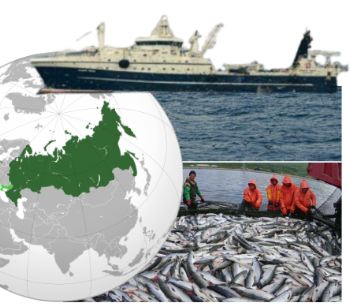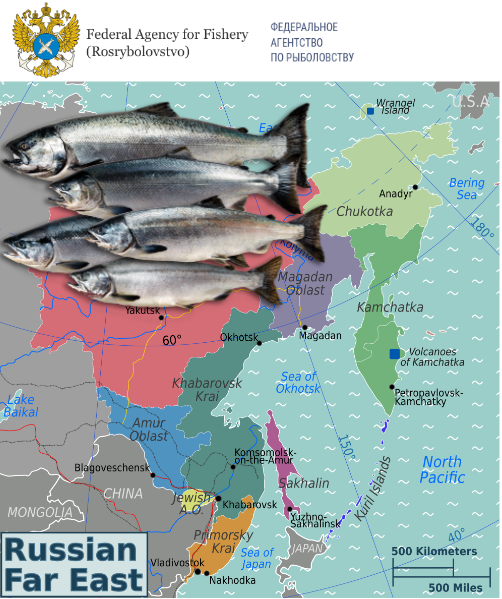|

Photo: Stockfile/FIS
Russian fishermen have caught more than 3.2 million tons by August 13 and the salmon season exceeds predictions
 RUSSIAN FEDERATION
RUSSIAN FEDERATION
Thursday, August 15, 2024, 00:10 (GMT + 9)
According to the industry monitoring system of the Federal Agency for Fisheries (Federal Service for Fisheries and Oceanography), by August 13, 2024, the catch of aquatic bioresources by all Russian users exceeded 3.22 million tons.
Almost 2.5 million tons were caught in the Far Eastern fishery basin, 331 thousand tons (+5%) in the Northern basin, 52.8 thousand tons in the Western basin, more than 20 thousand tons in the Azov-Black Sea basin, and almost 47.7 thousand tons in the Volga-Caspian basin.
In the exclusive economic zones of foreign states, conventional areas and the open part of the World Ocean, the Russian fleet extracted about 304 thousand tons.
(1).jpg)
Products from fresh catches are supplied to the country's domestic market on a priority basis.
Salmon fishing season 2024: salmon catch volume exceeds catch of similar even-numbered year
The total catch of Pacific salmon in the Far East reached 175 thousand tons by August 13 - this figure exceeded the level of the previous even year 2022 by almost 7% (traditionally, fishing figures are compared for even and odd years due to the peculiarities of the life cycle of pink salmon, which accounts for the bulk of the Pacific salmon catch).
In 2022, by August 13, 163 thousand tons of salmon were caught.
Traditionally, the main contribution is made by fishermen from the Kamchatka Territory: the catch volume amounted to 114 thousand tons (or 65% of the total catch).
- In Chukotka, the catch amounted to 274 tons.
- In second and third place in terms of catch are Sakhalin Oblast - 25.6 thousand tons (+29% compared to 2022) and Khabarovsk Krai - 25.4 thousand tons (+37% compared to 2022). The catch rates in these two regions are ahead of the previous year, 2023.
- In the Magadan Region, about 7.7 thousand tons were mined (more than twice the 2022 level), in Primorye - 1.8 thousand tons (2.8 times more than in 2022).

Pink salmon still dominates the Pacific salmon catch structure, with the catch of this species amounting to 120 thousand tons (69%), followed by sockeye salmon (33.5 thousand tons or 19%) and chum salmon (19.4 thousand tons or 11%). The total catch of chinook salmon, masu salmon and coho salmon amounts to almost 1.4 thousand tons.
By August 13, the total occupancy rate of refrigerators for storing fish products in Primorsky Krai was 35% (more than 40 thousand tons of fresh-frozen fish products).
There were 22 vessels approaching the sea ports of Primorsky Krai with 43 thousand tons of fish products, including 2.7 thousand tons of salmon, 35 thousand tons of pollock, 2.8 thousand tons of herring, and 0.3 thousand tons of cod. Freshly caught products are supplied to the domestic market on a priority basis.
Source: Federal Agency for Fisheries
[email protected]
www.seafood.media
|



